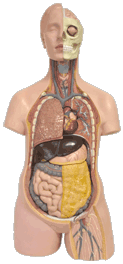At WiseGEEK, we're committed to delivering accurate, trustworthy information. Our expert-authored content is rigorously fact-checked and sourced from credible authorities. Discover how we uphold the highest standards in providing you with reliable knowledge.
What Is Morphogenesis?
Morphogenesis is an important process in developmental biology in which organisms develop their characteristic shapes. This includes the development of the shapes of tissues, organs, and the organism as a whole — it is not just limited to the whole shape of the organism. This process by which shape is defined is controlled indirectly by the creature's genetic makeup. Various processes, such as chemical signals involving hormones and physical stresses imposed by the patterns of cell development, cause cells to develop in a given way that leads to the formation of specifically-shaped organs. While morphogenesis is usually examined separately from cellular growth, the two are essentially the same in the development of single-celled organisms, as the shape of such a creature is defined by the shape of its one cell.
There are many different elements of developmental biology that eventually contribute to morphogenesis. Cell differentiation, the process by which one cell divides to form many, is important because many of the shapes of organs that lead to the overall shape of the organism are determined based on cell differentiation patterns. In early development, for instance, the first cell divides into two, but those two cells will not necessarily divide symmetrically. Different cells divide at different times, thereby causing asymmetric development that, after many subsequent divisions, leads to shape. These asymmetries are generally triggered by genetic instructions carried out by proteins or other chemical and spatial elements.

Cell growth is another important aspect of developmental biology that contributes to morphogenesis. Cell growth describes how much a cell grows in terms of its organelle and cytoplasm content. Some cells grow quite large while others remain rather small. Different cell sizes play an important part in morphogenesis, as cells of different sizes can combine in a variety of ways to produce organs with different shapes.
Morphogenesis is a relatively delicate process that can be disrupted or altered in many different ways. Developmental geneticists often study morphogenesis by deactivating specific targeted genes that store genetic instructions for certain cells in order to produce signals that trigger or stop various aspects of cell growth and differentiation. Often, such experiments result in organisms that do not develop sufficiently to survive past embryonic development. In some cases, certain important organs do not fully form while in others differentiation may not occur sufficiently for organ shapes to develop at all. By studying morphogenesis in this way, scientists are able to connect specific genes to particular developmental functions.
AS FEATURED ON:
AS FEATURED ON:










Discuss this Article
Post your comments